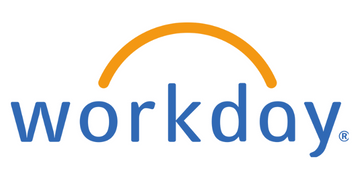Finance teams know the drill all too well. When budget season rolls around, it’s time to manually compile spreadsheets and other disparate data sources and attempt to make assessments based on often incomplete and inaccurate inputs. By the time these weeks- or even months-long processes are over, they can result in an annual plan based on out-of-date, and no longer accurate, market assumptions.
Yet businesses continue to invest valuable time and talent on limited planning processes that rely on this outdated data. Which is about as useful as planning this week’s wardrobe based on last week’s weather forecast. Instead, business planning must enter the era of the cloud by leveraging modern solutions that can enable real-time planning and forecasting. In doing so, organisations can make decisions more strategically and quickly— 20% to 30% faster, in fact.
The value of agile planning is only expected to increase. In part, that’s because CFOs see continued volatility on the horizon. In a 2023 McKinsey global survey, 51% of CFOs expect the same amount of volatility in the year ahead, and 36% expect even more volatility than last year. Amid volatile inflationary pressures, rising interest rates, the UK government’s U-turns on climate goals, and the long shadow of Brexit, companies must be able to anticipate and plan for change, and then adjust as needed.
Change, however, doesn’t happen on a predictable, once-a-year basis. Which is why planning practices, and the technology that support those practices, must evolve. Modern, cloud-based planning solutions can help empower enterprises to continually assess the environment and nimbly change course as needed.
From limited insight (and hindsight) to scenario planning
Every day, companies face a sea of “what ifs.” Determining which “if” has the potential to disrupt and damage the business can be time-consuming. However, organisations that rely on unified, cloud-based planning systems can iterate multiple what-if scenarios to identify the most likely outcomes and the most effective actions.
Scenario planning identifies the potential impact of risks—and opportunities—on the company’s finances and operations, allowing businesses to answer questions such as:
- How would the company handle a drop in consumer demand?
- In case of a revenue shortfall, what happens if the organisation accelerates its hiring plan to reduce the gap between staffing and the revenue target?
- What impact does a revenue shortfall have on other aspects of the financial plan such as cash flow and expenses?
Rather than relying on gut instinct, guesswork, and outdated information, finance leaders can instead be better prepared and equipped to respond to change.
From static to continuous planning
Long gone are the days when a single, fixed financial plan was a suitable solution. Today’s businesses must be able to adjust assumptions and pivot on the fly based on changing market conditions. This ability to model and analyse every contingency and spot gaps and opportunities necessitates a move from static to continuous planning.
Continuous planning harnesses all the financial and operational data into a single source of truth for always-available, always-current data. By adjusting budgets and forecasts not just annually but continually, companies can leverage this up-to-the-minute information to make the right moves at the right times.
From siloed to real-time data
However, finance leaders can only drive scenarios and continuous planning if they can access accurate, real-time data. The good news? Enterprises have more data available from more sources than ever before. But to account for all that data in their large and increasingly complex planning models, organisations cannot depend on siloed data sources. Busting data silos can pay real dividends. Best-in-class companies, for instance, are 82% more likely to have a single system for sharing financial and operational information.
Modern planning technology harnesses all of an organisation’s real-time financial and operational data—from enterprise resource planning (ERP) to human capital management (HCM) and customer relationship management (CRM)—into a single cloud-based platform. By embracing data-driven planning, companies can achieve deeper insights, adapt at scale, and gain control of their futures.
From reactive to predictive solutions
Relying on modern, machine learning-embedded planning solutions allows for faster data collection across data sources, allowing information to be visible across the entire organisation. When all functions share the same, accurate information and insight, it results in faster, more reliable, and more accurate planning.
More automated data gathering and reconciliation also transforms the reporting process from a rote exercise to a dynamic, ongoing driver of organisational change. With agile planning, companies are no longer caught in a game of catch up. Instead, they have the chance to anticipate change and quickly coordinate a response at scale, even in the face of sudden disruption.
Making better decisions, faster
Workday Adaptive Planning provides the planning platform companies need to easily adapt to changing business conditions, and enable an active planning process that incorporates everyone in the organisation.
The easy to use and integrated tool, helps to automate and streamline your finance processes so you’ll have more time to guide strategy and support business growth. And, because the platform works with any ERP/GL or other data source, you can get value right away.
Was this article helpful?
YesNo



